Linked List
Linked lists are a fundamental data structure in computer science. They are linear data structures that consist of nodes, where each node contains a data value and a reference to the next node in the sequence. Linked lists are a dynamic data structure, meaning that they can grow or shrink in size during the execution of a program.
Types of Linked Lists

-
Singly Linked List: Each node contains a data value and a reference to the next node in the sequence.
-
Doubly Linked List: Each node contains a data value and references to both the next and previous nodes in the sequence.
-
Circular Linked List: A linked list in which the last node points back to the first node.
Operations on Linked Lists
- Insertion: Adding a new node to the linked list.
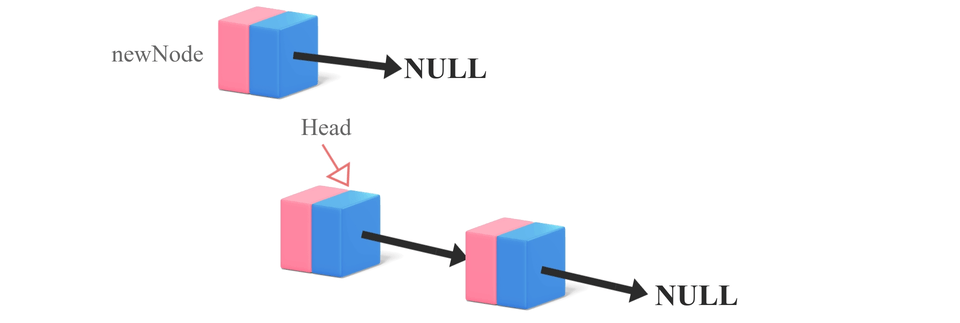
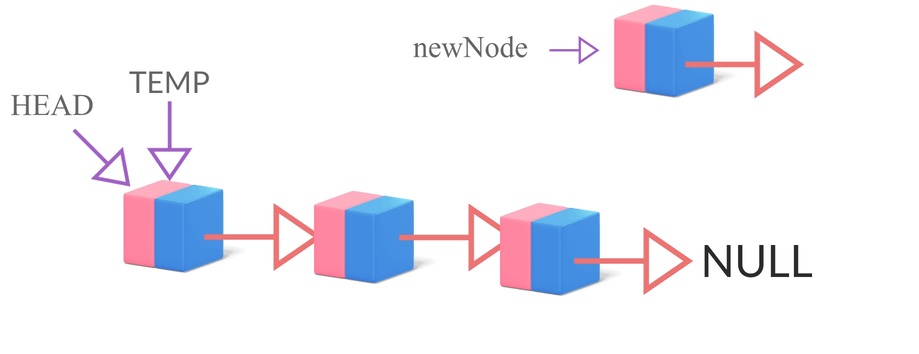
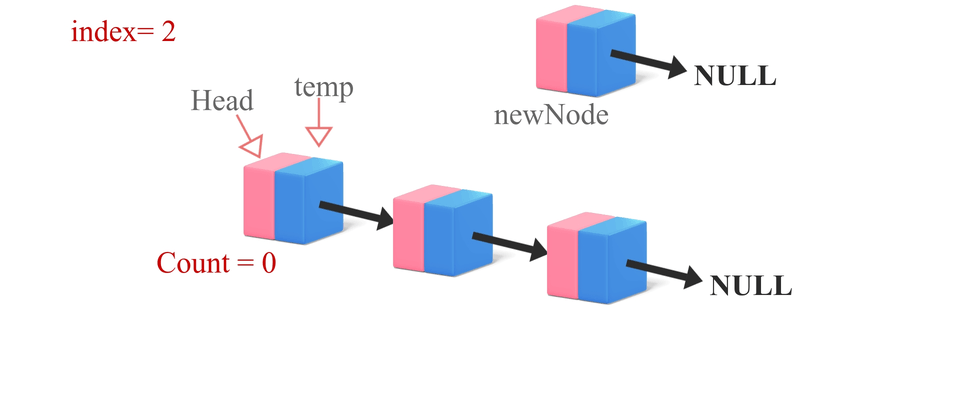
- Deletion: Removing a node from the linked list.


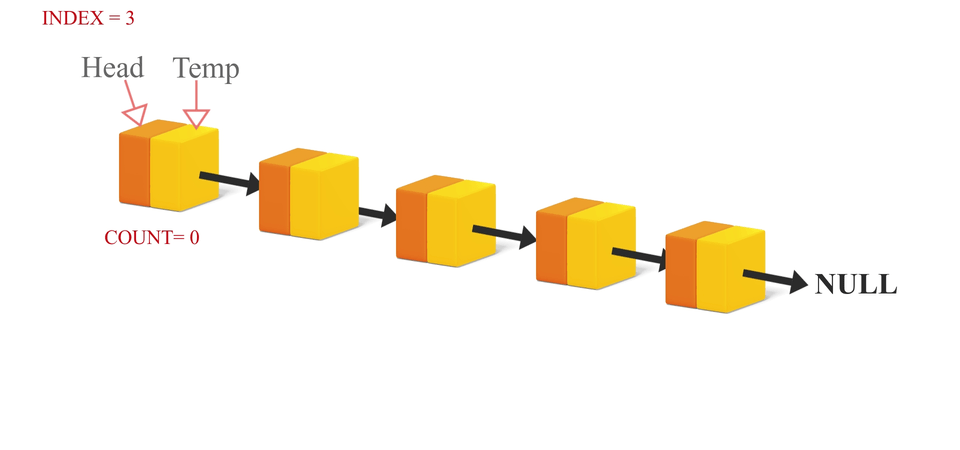
-
Traversal: Visiting each node in the linked list.
-
Search: Finding a specific node in the linked list.
-
Update: Changing the data value of a node in the linked list.
Advantages of Linked Lists
-
Dynamic Size: Linked lists can grow or shrink in size during the execution of a program.
-
Efficient Insertion and Deletion: Inserting or deleting a node in a linked list is efficient compared to arrays.
-
No Memory Wastage: Linked lists can use memory efficiently by allocating memory only when needed.
Disadvantages of Linked Lists
-
Random Access: Linked lists do not support random access to elements, meaning that you cannot directly access the
i-th element in a linked list. -
Extra Memory: Linked lists require extra memory to store references to the next node.
-
Traversal Overhead: Traversing a linked list requires visiting each node in sequence, which can be slower than accessing elements in an array.
Problems
-
Question 1. Reverse Linked List
Easy
Given the head of a singly linked list, reverse the list, and return the reversed list.

class ListNode:
def __init__(self, val=0, next=None):
self.val = val
self.next = next
def reverse_list(head: ListNode) -> ListNode:
pass
assert reverse_list([1,2,3,4,5]) == [5,4,3,2,1], "Test case 1 failed"
assert reverse_list([1,2]) == [2,1], "Test case 2 failed"
assert reverse_list([]) == [], "Test case 3 failed"
print("Test cases passed :)")
-
Question 2. Merge Two Sorted Lists
Easy
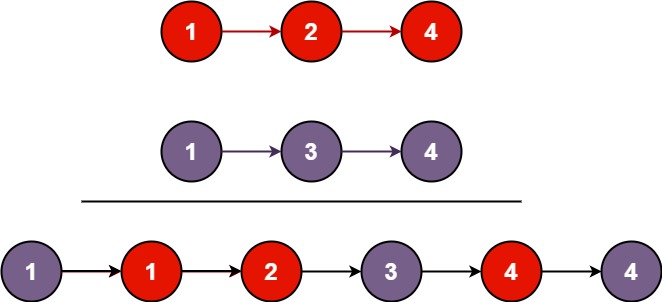
You are given the heads of two sorted linked lists list1 and list2.
Merge the two lists into one sorted list. The list should be made by splicing together the nodes of the first two lists.
Return the head of the merged linked list.
class ListNode:
def __init__(self, val=0, next=None):
self.val = val
self.next = next
def merge_two_lists(l1: ListNode, l2: ListNode) -> ListNode:
pass
assert merge_two_lists([1,2,4], [1,3,4]) == [1,1,2,3,4,4], "Test case 1 failed"
assert merge_two_lists([], []) == [], "Test case 2 failed"
assert merge_two_lists([], [0]) == [0], "Test case 3 failed"
print("Test cases passed :)")
Question 3. Reorder List
Medium
You are given the head of a singly linked-list. The list can be represented as:
L0 → L1 → … → (Ln - 1) → Ln
Reorder the list to be on the following form:
L0 → Ln → L1 → (Ln - 1) → L2 → (Ln - 2) → …
You may not modify the values in the list’s nodes. Only nodes themselves may be changed.

class ListNode:
def __init__(self, val=0, next=None):
self.val = val
self.next = next
def reorder_list(head: ListNode) -> None:
pass
assert reorder_list([1,2,3,4]) == [1,4,2,3], "Test case 1 failed"
assert reorder_list([1,2,3,4,5]) == [1,5,2,4,3], "Test case 2 failed"
assert reorder_list([1,2]) == [1,2], "Test case 3 failed"
print("Test cases passed :)")
Question 4. Linked List Cycle
Easy
Given head, the head of a linked list, determine if the linked list has a cycle in it.
There is a cycle in a linked list if there is some node in the list that can be reached again by continuously following the next pointer. Internally, pos is used to denote the index of the node that tail’s next pointer is connected to. Note that pos is not passed as a parameter.
Return true if there is a cycle in the linked list. Otherwise, return false.

class ListNode:
def __init__(self, val=0, next=None):
self.val = val
self.next = next
def has_cycle(head: ListNode) -> bool:
pass
node1 = ListNode(3)
node2 = ListNode(2)
node3 = ListNode(0)
node4 = ListNode(-4)
node1.next = node2
node2.next = node3
node3.next = node4
node4.next = node2
assert has_cycle(node1) == True, "Test case 1 failed"
node1 = ListNode(1)
node2 = ListNode(2)
node1.next = node2
node2.next = node1
assert has_cycle(node1) == True, "Test case 2 failed"
node1 = ListNode(1)
assert has_cycle(node1) == False, "Test case 3 failed"
Question 5. Remove Nth Node From End of List
Medium
Given the head of a linked list, remove the nth node from the end of the list and return its head.
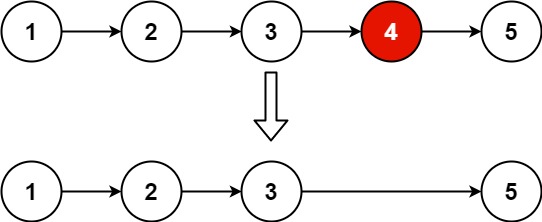
Follow up: Could you do this in one pass?
class ListNode:
def __init__(self, val=0, next=None):
self.val = val
self.next = next
def remove_nth_from_end(head: ListNode, n: int) -> ListNode:
pass
node1 = ListNode(1)
node2 = ListNode(2)
node3 = ListNode(3)
node4 = ListNode(4)
node5 = ListNode(5)
node1.next = node2
node2.next = node3
node3.next = node4
node4.next = node5
assert remove_nth_from_end(node1, 2) == [1,2,3,5], "Test case 1 failed"
node1 = ListNode(1)
assert remove_nth_from_end(node1, 1) == [], "Test case 2 failed"
node1 = ListNode(1)
node2 = ListNode(2)
node1.next = node2
assert remove_nth_from_end(node1, 1) == [1], "Test case 3 failed"